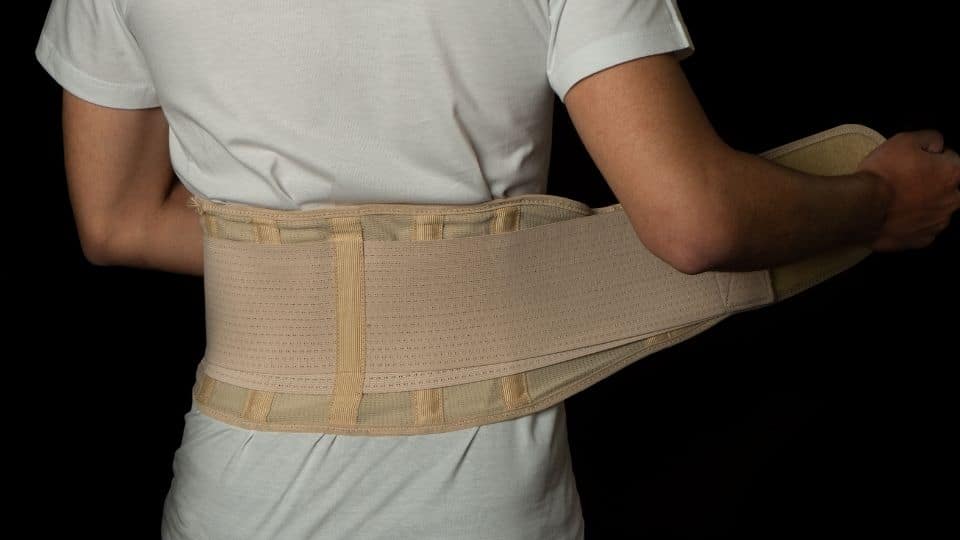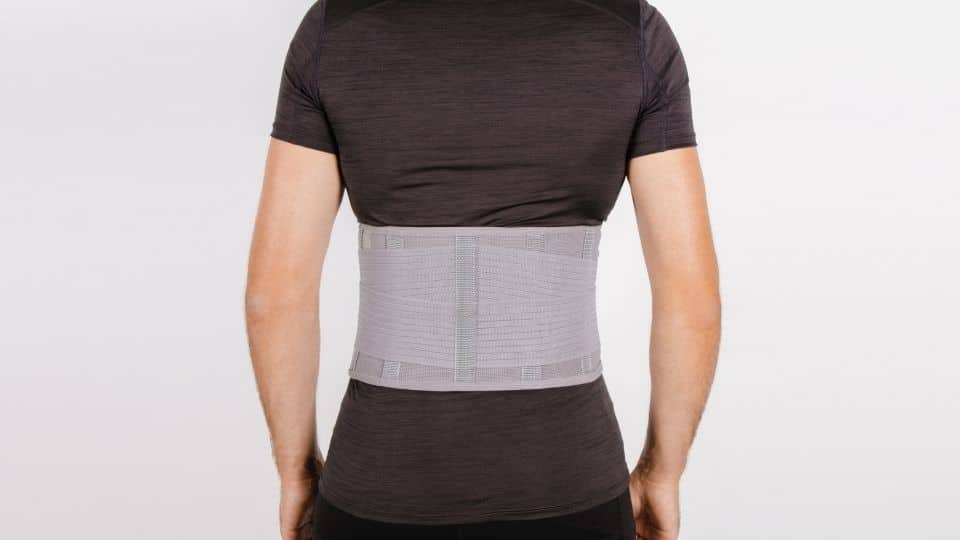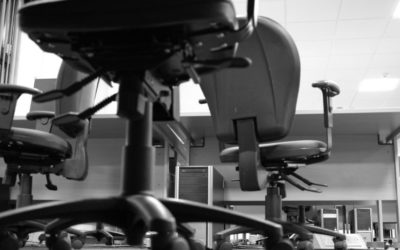If you suffer from back pain, you may have heard of a lumbar belt. But do you know how it works? More importantly, do they work at all? A lumbar belt is designed to help support your lower back and reduce pain. We are told that they do this by providing compression and stabilization to the area. If you’re considering a lumbar belt for your back pain, here’s what you need to know about if and how they work.
As a general rule, the use of back support belts on a regular basis does not appear to improve symptoms or injury risk significantly. Poor technique or preexisting health conditions can also contribute to this. More research is needed to conclusively determine whether back support belts are effective.
All Day Comfort & Support
If you suffer from back pain, you might have heard of a lumbar belt. But do you know how it works? A lumbar belt is designed to support the lower back and reduce pain through compression and stabilization. However, it’s important to understand that back pain often stems from sitting incorrectly for prolonged periods.
Poor posture and strain on the lower back can cause discomfort and stiffness. In addition to a lumbar belt, considering an ergonomic seat cushion could be a helpful solution. It promotes proper alignment and reduces pressure on the spine, providing relief from back pain caused by sitting incorrectly. Remember, using both a lumbar belt and an ergonomic seat cushion, along with mindful posture adjustments, can address the root cause of your back pain more effectively.
I believe that I can help you with your decision. My YouTube channel, 30 years of Chiropractic practice, trained ergonomist, published book, engineered solutions, and successful Kickstarter campaign makes me an expert on this subject!

How Long Can You Wear a Lumbar Belt?
As a general rule, Wearing a lumbar belt for too long can cause your muscles to weaken, which could lead to further injuries. The brace is meant to be a short-term solution to preventative measures rather than a long-term fix.
Black Friday: 35% Off Today
Typical Delivery 1-3 Days
You must adhere to the 10-day maximum wearing time and focus on other preventative methods such as physical therapy and exercises. If you notice your muscles starting to feel weaker after wearing the brace for a few days, stop immediately and allow your body to rest. It is better to be safe than sorry regarding your spine and back health. Remember to listen to your body and give it the care it needs and deserves.
How to Avoid Back Pain When Seated
Let’s be real, good seated alignment is absolutely critical here! Keeping your muscles and joints in proper alignment can help prevent pain and discomfort. Poor posture, on the other hand, can lead to various negative effects. To improve your posture, it is important to be mindful of your body positioning, engage in exercises to strengthen your core muscles, and make an effort to maintain good posture throughout the day. Here’s a simple tip that I give to all of my back pain patients: Use an ergonomic seat cushion always!
I was surprised how similar cheap memory foam seat cushions with FAKE REVIEWS were on AliExpress from the listings on Amazon!

I explain the concept of a seat wedge on a TV show HERE.
Using an ergonomic seat cushion provides several benefits in terms of support, alignment, and comfort. Here’s why someone should consider using one:
- Support: Ergonomic seat cushions are designed to provide optimal support to the body, especially the lower back and buttocks. They typically feature contoured shapes and cushioning materials that help distribute body weight evenly, reducing pressure points. This support promotes better posture and helps prevent discomfort and fatigue during prolonged sitting.
- Alignment: Sitting for extended periods can lead to poor spinal alignment, which can contribute to back pain and posture-related issues. Ergonomic seat cushions are designed to promote proper alignment by encouraging the natural curvature of the spine. They provide support to the lumbar region, helping maintain the spine’s neutral position, which is crucial for overall spinal health.
- Comfort: Ergonomic seat cushions offer enhanced comfort compared to regular seating surfaces. They are often made of high-quality foam or gel materials that provide a plush and supportive feel. The cushioning helps alleviate pressure on sensitive areas like the tailbone (coccyx), hips, and thighs. By reducing discomfort, these cushions enable individuals to sit for longer durations with less fatigue and pain.
- Blood circulation: Prolonged sitting can impede proper blood circulation, leading to numbness or tingling in the legs and feet. Ergonomic seat cushions often feature designs that promote healthy blood flow. For instance, some cushions have contours or cut-outs that reduce pressure on the thighs and encourage unrestricted circulation. This can help prevent the onset of conditions like deep vein thrombosis (DVT) and reduce the risk of developing related complications.
- Versatility: Ergonomic seat cushions are versatile and can be used in various settings. Whether you’re working at a desk, driving a car, sitting on a plane, or attending a sporting event, these cushions can provide comfort and support wherever you need them. They are typically lightweight and portable, allowing you to carry them easily and ensure consistent support for your body regardless of the environment.
In summary, using an ergonomic seat cushion can provide crucial support, promote proper spinal alignment, enhance comfort, improve blood circulation, and offer versatility in various settings. By investing in an ergonomic seat cushion, individuals can significantly improve their sitting experience, reduce the risk of discomfort and pain, and prioritize their overall well-being.
All Day Comfort & Support
When Should You Use a Back Belt?
Back belts are designed to provide support and stability to the spine. They are often used by people with a history of back injuries or performing physically demanding jobs. While back belts can help prevent injuries, they are not appropriate for everyone. People with certain medical conditions, such as diabetes, should not use back belts. In addition, back belts should not be worn during exercise or when performing activities that require a high level of flexibility. Only a qualified healthcare provider can determine whether a back belt is right for you.
I’ve written a complete hands-on review about the best sitting position for sciatica, and here is what I tested best with my sciatica patients.
Black Friday: 35% Off Today
Typical Delivery 1-3 Days
How Many Hours a Day Should You Wear a Back Brace?
Regarding back braces, there is no straightforward answer regarding how many hours a day you should wear one. Some experts recommend using the brace for only a short period each day, such as 1-2 hours, to avoid causing further damage to your core and muscles. However, others believe that wearing the brace for more extended amounts of time each day can be an effective way to support and stabilize your spine as you heal from an injury or condition.
Ultimately, the best approach is to consult your doctor or physical therapist to determine what is suitable for your specific needs and situation. But whatever option you choose, it’s crucial to be mindful of how and when you wear the brace to get the most benefit from it without causing any adverse side effects. In other words, when using a back brace, moderation is key!

How Tight Should a Back Brace Be?
When wearing a back brace, it is essential to ensure that it is properly fitted and comfortably snug. Too loose, and the brace won’t be effective at relieving your sore back or providing support for your spine. However, if it is too tight, the pressure can cause discomfort and bruise and disrupt circulation to your lower back.
Ideally, your brace should be snug but not too tight. You should be able to comfortably fit two fingers between your skin and the brace material. Additionally, the amount of pressure the brace applies should match roughly that of an average handshake – firm but not overly aggressive or painful. With this level of fit, you can be confident that your brace will offer proper support without causing undue irritation or other issues.
Why Does Lumbar Support Hurt My Back?
Lumbar support may play a role in preventing and relieving back pain. However, if it is not adjusted correctly, it can end up hurting your back. To determine the ideal height of your lumbar support, you must consider how you typically sit and what kind of posture you adopt.
One common scenario is when the lumbar support is too high, causing you to lean forward and slouch over your desk or workstation. This position strains your back muscles and exacerbates fatigue, making it harder for you to focus on the task. Alternatively, when the lumbar support is set too low, it can force you into a hunched-over position that puts tremendous strain on your spine and causes pain and stiffness.
Try positioning it just above the beltline to find the right position for your lumbar support. This will help to maintain a natural curvature in your spine while allowing you to sit comfortably at your desk or table without straining. With proper adjustment of your lumbar support, you’ll enjoy all of its benefits without suffering from discomfort or pain. So stop letting bad posture hurt your back – get the right amount of l
Does Lumbar Support Help Sciatica?
Sciatic nerve pain is a sharp, shooting pain radiating from your lower back down your leg. This condition can be caused by several factors, including a herniated disc, bone spurs, or muscle inflammation. While there is no ‘silver bullet’ cure for sciatica, there are a few things you can do to ease the pain.
One treatment option is lumbar support. By placing a pillow or bolster against your lower back, you can help to alleviate pressure on the sciatic nerve and reduce pain. However, this is rare in my opinion. Lumbar Support: Sciatica starts in the lumbar region, which is often tight or has weakened due to a sedentary lifestyle. Correct your posture and help properly position your back with lumbar support. If you suffer from chronic sciatica, you may consider seeing a chiropractor or massage therapist for additional relief.
Should I Wear a Back Brace to Bed?
Many people who suffer from back pain may be tempted to use a back brace while they sleep to prevent further damage or ease their pain.
As a general rule, there is very little evidence regarding the efficacy of wearing a back brace to bed. Some experts believe that wearing a back brace while you sleep can become counterproductive by causing tightness and restricting muscle and joint movement.
Instead, they recommend using other non-invasive methods for treating lower back pain, such as applying heat or chiropractic care.
If you are experiencing acute, severe pain or if you are unsure about whether or not wearing a back brace at night might help, it is best to consult with your health professional. They can assess the nature of your pain and guide you on the best way to treat it and prevent future episodes. While wearing a back brace at night may not be optimal, it may be worth exploring if other options have failed to produce meaningful relief for your condition.
Does a Back Brace Help with Bulging Discs?
A back brace is often recommended as a treatment for a bulging disc, especially if the disc is causing pain or limiting your range of motion. While a brace can provide support and help to limit further strain on the disc, it’s essential to be aware that it may not always be the most effective treatment. In some cases, a brace can worsen the pain by exacerbating the inflammation. If you’re considering using a back brace for your bulging disc, speak with your doctor first to ensure that it is the best option.
Will a Back Brace Help a Pinched Nerve?
While several different treatments can help relieve sciatica symptoms, many people find that wearing a back brace is one of the most effective. This is because the brace supports and stabilizes the affected area, helping to reduce pressure on the sciatic nerve. Back braces also help prevent strain and rigidity in the surrounding muscles, which can further aggravate sciatic nerve pain.
However, while some people do experience relief from using a back brace, I have found that they often make the condition worse for others. This typically occurs when people wear their brace for too long or at too high a setting. In these cases, excess pressure builds upon the spinal cord or vertebrae, which can worsen symptoms instead of relieve them. As such, anyone suffering from sciatica should always consult a medical professional before deciding whether or not to use a back brace. Ultimately, it will depend on their situation and what works best for them as individual patients.
Can a Back Brace Help with Lower Back Pain?
Yes, sometimes a back brace may help with lower back pain in certain situations. The key to using a back brace effectively is understanding how it functions and when it should be used. Generally, the main benefit of a back brace is that it unloads some of the weight generally placed on the lower back, thereby reducing pressure on the spine’s joints, discs, and muscles. This results in less painful muscle tension, often a protective response following an injury.
Yes, a back brace can help with lower back pain in certain situations. The key to using a back brace effectively is understanding how it functions and when it should be used. Generally, the main benefit of a back brace is that it unloads some of the weight customarily placed on the lower back, thereby reducing pressure on the spine’s joints, discs, and muscles. This results in less painful muscle tension, often a protective response following an injury.
A back brace should not be a long-term solution to lower back pain. Instead, it is typically recommended for short-term use after an injury or during a particularly challenging recovery from an illness or surgery. By limiting movement and providing support where needed, a back brace can help to reduce discomfort while promoting healing. Overall, a back brace can effectively manage ongoing lower back pain when used appropriately in conjunction with other treatment methods such as physical therapy or exercise.
However, a back brace should not be a long-term solution to lower back pain. Instead, it is typically recommended for short-term use after an injury or during a particularly challenging recovery from an illness or surgery. By limiting movement and providing support where needed, a back brace can help to reduce discomfort while promoting healing. Overall, a back brace can effectively manage ongoing lower back pain when used appropriately in conjunction with other treatment methods such as physical therapy or exercise.
Should I Wear a Back Brace While Sitting?
There are a lot of different opinions on whether or not back braces are effective in preventing back pain and improving posture. Some people swear by them, while others say they’re more trouble than they’re worth. So, what’s the verdict? Are back braces a good idea?
There are a lot of different opinions on whether or not back braces are effective in preventing back pain and improving posture. Some people swear by them, while others say they’re more trouble than they’re worth. So, what’s the verdict? Are back braces a good idea?
At best, back braces can hold your back in the correct position and prevent strain while sitting or standing. They’re also perfect to wear at work, while exercising, or in other situations. However, back braces can also be uncomfortable and inconvenient to wear. They can make it challenging to move around, and some people find them quite irritating. Ultimately, whether or not a back brace is a good idea. Give it a try if you think it will help relieve your pain and improve your posture. But if you’re not sure, you might want to consult with a doctor or physiotherapist first.
If you are into super easy and inexpensive alternatives to office chairs, I wrote a fantastic article on how and why you should consider these options for back pain, and I encourage you to read it!

Is Lumbar Support Good for You?
Lumbar supports are designed to provide support for the lower back and can be an effective way to relieve pain and improve posture. When selecting lumbar support, it is essential to choose one designed by an expert and made from natural latex. Two straps adjust the level of support. This will help keep the spine in alignment while sitting or standing for long periods. Many people find that using lumbar support can help to reduce back pain and improve their overall quality of life.
Which Belt Is Best for Back Pain?
When it comes to choosing the right belt for back pain, many factors should be considered. For example, some belts and braces are made from materials such as Velcro or elastic, allowing easy adjustments. These belts may be helpful for those who frequently change their position or require support in different areas of the body. Additionally, some belts are designed for specific injuries or types of movement. For example, an abdominal belt may help to provide extra stability and support when lifting heavy objects or engaging in other strenuous activities. Ultimately, the choice of a belt will depend on each individual’s specific needs and preferences. However, by carefully considering your circumstances and needs, you can find a belt that best suits your back pain relief.
Conclusion
A lumbar belt is a device that is worn around the waist to provide support to the lower back. It is often recommended for people with back pain, especially in the lumbar region.
- Lumbar belts work by providing compression and stabilization of the lower back. This can help reduce pain and improve function.
- However, there is not much evidence to suggest that lumbar belts work. Some studies have shown that they may do more harm than good in some cases.
- Therefore, lumbar belts should only be used as a temporary measure and with caution. If you are considering using one, speak with your doctor first.
Sources:
- Ammendolia, C., Kerr, M.S. and Bombardier, C., 2005. Back belt use for prevention of occupational low back pain: a systematic review. Journal of manipulative and physiological therapeutics, 28(2), pp.128-134.
- Calmels, P., Queneau, P., Hamonet, C., Le Pen, C., Maurel, F., Lerouvreur, C. and Thoumie, P., 2009. Effectiveness of a lumbar belt in subacute low back pain: an open, multicentric, and randomized clinical study. Spine, 34(3), pp.215-220.
- Jellema, P., van Tulder, M.W., van Poppel, M.N., Nachemson, A.L. and Bouter, L.M., 2001. Lumbar supports for prevention and treatment of low back pain: a systematic review within the framework of the Cochrane Back Review Group. Spine, 26(4), pp.377-386.
- Shahvarpour, A., Preuss, R. and Larivière, C., 2019. The effect of extensible and non-extensible lumbar belts on trunk postural balance in subjects with low back pain and healthy controls. Gait & Posture, 72, pp.211-216.
- Boucher, J.A., Roy, N., Preuss, R. and Larivière, C., 2017. The effect of two lumbar belt designs on trunk repositioning sense in people with and without low back pain. Annals of Physical and Rehabilitation Medicine, 60(5), pp.306-311.





